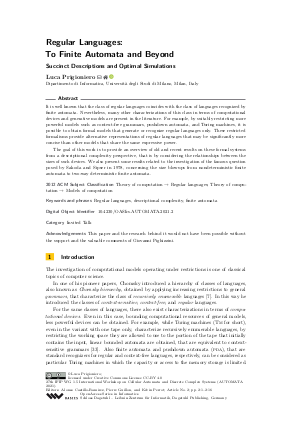OASIcs.AUTOMATA.2021.2.pdf
- Filesize: 0.66 MB
- 16 pages

 Creative Commons Attribution 4.0 International license
Creative Commons Attribution 4.0 International license





Feedback for Dagstuhl Publishing